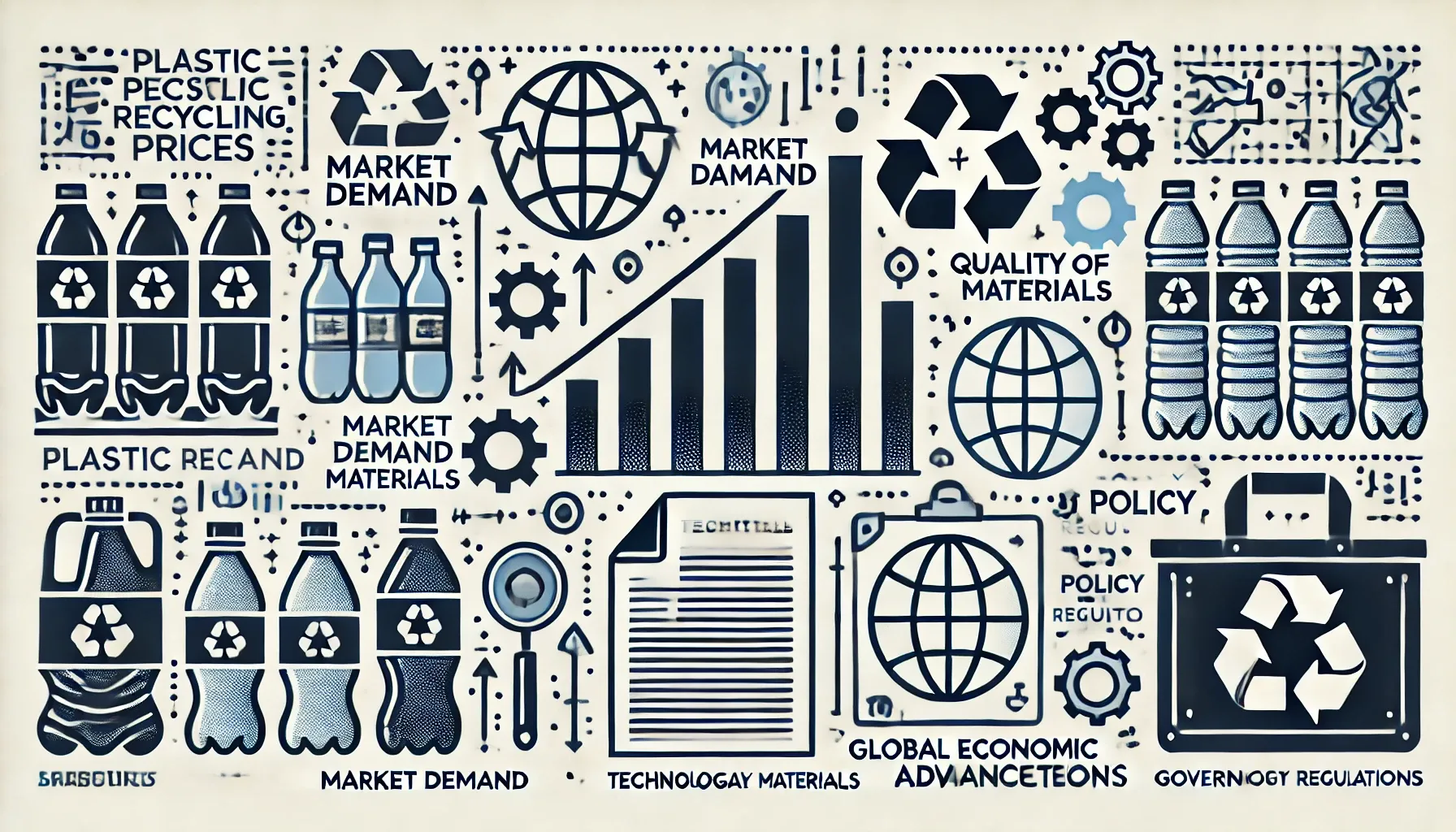Recycling van plastic is een cruciaal onderdeel van duurzaam afvalbeheer, maar heb je je ooit afgevraagd wat de prijzen van gerecycled plastic beïnvloedt? Dit artikel onderzoekt de belangrijkste factoren die de prijzen van plastic recycling bepalen en biedt waardevolle inzichten voor zowel bedrijven als consumenten.
Marktvraag naar gerecyclede kunststoffen
Dynamiek van vraag en aanbod
De fundamentele wet van vraag en aanbod speelt een belangrijke rol bij het bepalen van de prijzen van gerecycled plastic. Wanneer de vraag naar gerecycled plastic hoog is, stijgen de prijzen. Omgekeerd, wanneer de vraag laag is, dalen de prijzen.
Industriële toepassingen
Verschillende sectoren, waaronder de verpakkingsindustrie, de auto-industrie en de bouw, stimuleren de vraag naar gerecycled plastic. Naarmate meer bedrijven zich inzetten voor duurzame praktijken, stijgt de vraag naar hoogwaardige gerecyclede materialen, waardoor de prijzen stijgen.
Kwaliteit van gerecyclede materialen
Besmettingsniveaus
De kwaliteit van gerecycled plastic wordt sterk beïnvloed door de mate van verontreiniging. Schone, goed gesorteerde plastics brengen hogere prijzen op dan vervuilde of gemengde materialen, die meer verwerking vereisen.
Soort kunststof
Verschillende soorten kunststoffen hebben verschillende waarden. Zo zijn PET (polyethyleentereftalaat) en HDPE (hogedichtheidspolyethyleen) waardevoller en gewilder op de recyclingmarkt dan andere kunststoffen zoals PVC (polyvinylchloride) en LDPE (lagedichtheidspolyethyleen).
Impact van mondiale economische trends
Olieprijzen
Omdat de productie van nieuw plastic nauw verbonden is met de prijs van ruwe olie, kunnen schommelingen in de olieprijzen een aanzienlijke invloed hebben op de kosten van gerecycled plastic. Wanneer de olieprijzen laag zijn, wordt nieuw plastic goedkoper, waardoor de vraag naar gerecyclede alternatieven afneemt.
Handelsbeleid
Wereldwijd handelsbeleid en -regelgeving kunnen ook van invloed zijn op de prijzen voor plasticrecycling. Tarieven, import-/exportbeperkingen en internationale overeenkomsten spelen een rol bij het bepalen van de grensoverschrijdende stroom van gerecyclede materialen.
Technologische vooruitgang
Recyclingprocessen
Innovaties in recyclingtechnologieën kunnen de kosten verlagen en de efficiëntie van plasticrecycling verbeteren, wat mogelijk leidt tot lagere prijzen. Geavanceerde sorteer- en verwerkingstechnieken maken een betere terugwinning van hoogwaardige materialen mogelijk.
Duurzame Praktijken
Naarmate de technologie vordert, ontstaan er efficiëntere en milieuvriendelijkere recyclingmethoden. Deze methoden verbeteren niet alleen de kwaliteit van gerecyclede kunststoffen, maar maken het recyclingproces ook kosteneffectiever.
Overheidsregelgeving en prikkels
Milieubeleid
Overheidsregelgeving ter bevordering van recycling en vermindering van plastic afval heeft invloed op de recyclingprijzen. Beleid zoals stortbelastingen, recyclingverplichtingen en verboden op wegwerpplastic kunnen de vraag naar gerecyclede materialen stimuleren.
Financiële prikkels
Subsidies, subsidies en belastingvoordelen voor bedrijven die investeren in recyclinginfrastructuur, kunnen de operationele kosten van recycling verlagen en zo de totale prijzen van gerecycled plastic beïnvloeden.
Conclusie
Inzicht in de factoren die de recyclingprijzen voor plastic bepalen, is essentieel voor zowel bedrijven als consumenten. De marktvraag, de kwaliteit van gerecyclede materialen, wereldwijde economische trends, technologische vooruitgang en overheidsbeleid spelen allemaal een cruciale rol. Door op de hoogte te blijven van deze factoren, kunnen belanghebbenden strategischere beslissingen nemen en bijdragen aan een duurzamere toekomst.

